The Electric Vehicle Industry Development Act (EVIDA) act has already passed into law. The charge of electric vehicles onto Philippine shores is now beyond a pipe dream, albeit, still a dream. The rest of the world may have its deadline (and already focusing on selling their EVs), but the Philippines has nothing but a plan at this point.
If you’re among those who are eager to jump into the electric vehicle bandwagon but a bit frustrated with the current situation, there’s a car that’s fit for your transition – the Mitsubishi Outlander PHEV.
But as with any completely new product, it does come with birth pains (at least in the Philippines), plus its price tag is not meant for the masses. If you’re willing (and capable) to accept those quirks, then the Outlander PHEV is the perfect and the most versatile transition vehicle for you – at least before the emergence of EVs locally.
Dynamic Shield of yesteryears
The current Outlander PHEV being sold locally was introduced in 2016, and it quickly became the world’s bestselling plug-in hybrid electric vehicle. But it was only in 2020 when Mitsubishi Motors Philippines Corporation officially introduced the model into the market. Now, it’s 2022, which means it has been a good six years that this car has been on the market; there’s even a new Outlander PHEV in the global market but that has yet to reach the ASEAN region.
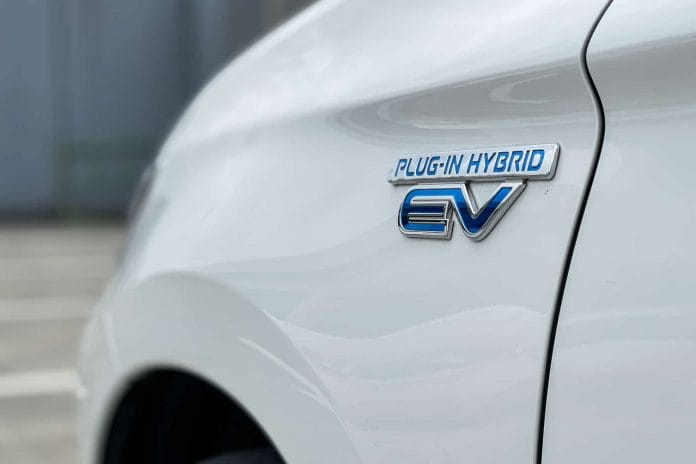
That said, the Outlander PHEV’s design is getting dated. It’s not aligned with the likes of the new Xpander and Montero Sport in terms of styling. As a silver lining, despite the aging design, the Outlander PHEV doesn’t look old to the eyes of many. The dotted DRLs may give away the car’s age but everything else still looks modern by today’s standards. The proportions are just right for a five-seat crossover, though it nears the Montero Sport in terms of heft.
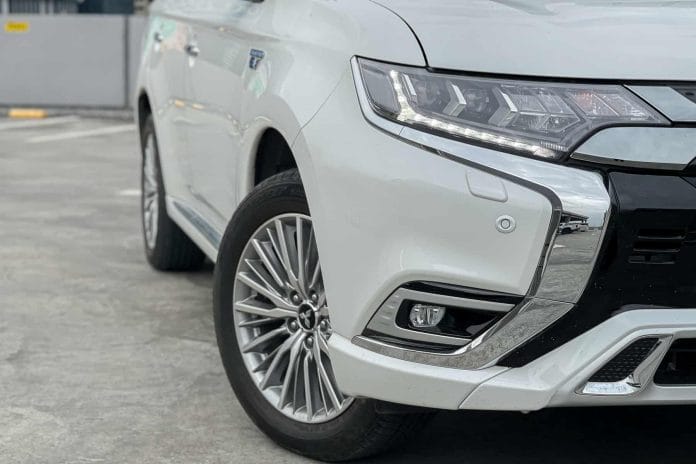
Overall, the classy, non-pretentious design works well for the Outlander PHEV’s relative timelessness – just don’t look its successor up for your own good.
Roomy and comfortable cabin
There’s no better word to describe the Outlander PHEV’s cabin other than roomy. It’s a five-seat crossover, which means unlike the Montero Sport’s added third row for two more extra seats, the Outlander PHEV makes use of all the space at the back for a commodious rear seat and immense cargo space. Combined with the vehicle’s soft suspension setup, this translates to great overall riding comfort.
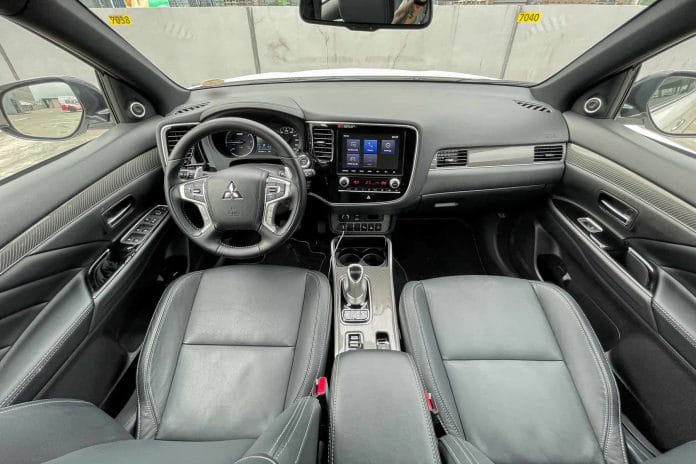
The type of upholstery adds to the coziness the roomy cabin provides, while most touch points are either wrapped in cowhide or soft plastics. Some piano-black plastic parts are scratch-prone, though, so make sure that you and your passengers are well-groomed upon entering the vehicle. The dark headliner adds a more premium feeling to the whole interior, while the rear air-conditioning vents make sure that rear occupants aren’t void of the needed cold air.
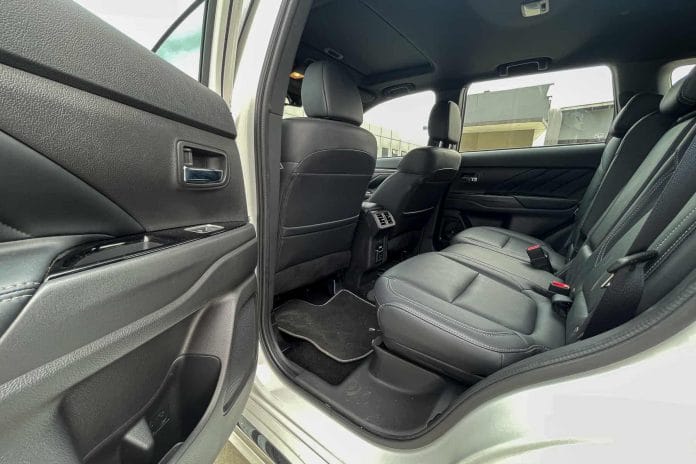

Then again, the Outlander PHEV isn’t without gripes. As with other Mitsubishis, the control buttons on the center console and the left side behind the steering wheel are weirdly grouped together, while the cargo area’s loading height is a touch too high for easy loading of heavy items.
Loaded with tech & safety features
The Mitsubishi Outlander PHEV does come with several tech features despite its age. It has an electronic parking brake with auto brake hold, while the tailgate is automatic as well. It comes with a sunroof, albeit, rather small, while there is a bevy of USB charging ports all over the vehicle for the whole family. And, despite the finicky and aging head unit on the media tester that I tested, I’m still glad it comes with Apple CarPlay and Android Auto for a better user interface.
But those aren’t the things that make Outlander PHEV high-tech. Beyond its plug-in hybrid capabilities, its equipped with Mitsubishi’s advanced driver-assistance tech as well. From things as simple as Blind Spot Detection and Lane Departure Warning to something more advanced like radar-equipped Adaptive Cruise Control and Forward Collision Mitigation System, the Outlander PHEV is one of the safest crossovers out there – next to more modern offerings of other brands like Subaru.
EV mode & charging
As a plug-in hybrid, the Outlander PHEV comes with three types of drive: pure electric, series hybrid, and parallel hybrid. We’ll talk about its EV mode in this segment, which can be toggled via a button on the gear shifter.
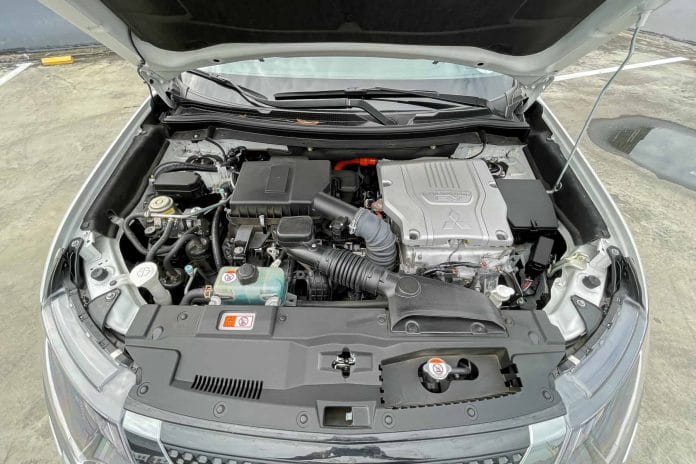
In EV mode, the Outlander can reach up to 55 kilometers without using a single drop of precious gasoline. For those living within the city with most trips confined within the Metro, this means fewer trips to gasoline stations. And if you’ve set up a charging station at home, which isn’t as straightforward as one would hope for, you get the luxury of not needing to fill up anymore.
But for those who live in the provinces, or don’t have the privilege to alter the electrical systems of their garage (hello, condo living), the Outlander PHEV has the ability to charge its own battery at the expense of fuel (there’s also a mode where the system prioritizes charging).
Still, having the option to go pure electric or hybrid has its advantages, at least in lowering your fuel costs.
Hybrid drives, in a nutshell
Beyond the pure EV mode, the Outlander PHEV has two hybrid modes, depending on what the situation warrants. It can either run on motors with the engine running to charge the batteries and provide additional grunt (series), or run on engine power with the electric motors serving as additional oomph at high-speed runs (parallel). Either way, there’s the involvement of the electric motors, which amplify the whole driving experience.
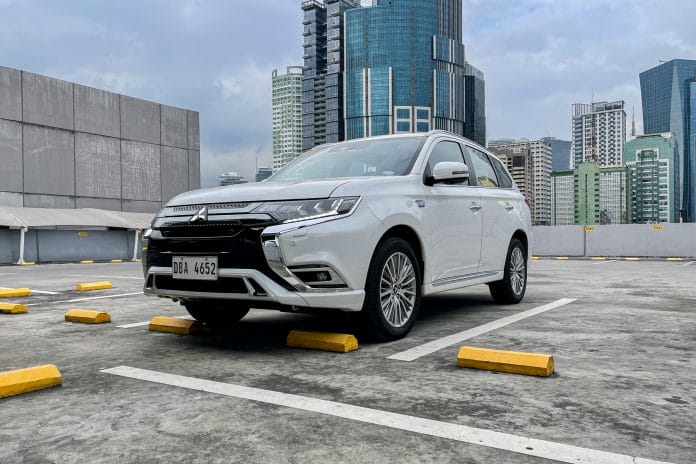
That said, regardless of whether you’re running series or parallel, the Outlander PHEV felt quick on standstill, benefiting from the instantaneous torque coming from the two motors. It also handles well on both tight streets and provincial twisties, thanks to its Goldilocks-sized body and low center of gravity. Braking felt natural, too, despite the digitalized setup for regenerative braking. It’s fun to drive, so to speak while being relatively good at keeping your fuel consumption low.
In my tests, I was able to clock in 14-15 km/l of mixed city and highway driving, which was impressive by my standards.
Premium pricing
Since the Outlander PHEV is filled with engineering and tech, you can expect its pricing to be a bit higher than the usual pure gasoline or diesel-powered SUVs. Worse, our country’s unforgiving policies (or the lack of) on EVs and PHEVs won’t offset the tax duties—at least for now.
That said, the Outlander PHEV comes with a bit of a premium – a rather steep sticker price of P2,998,000. Not everyone who aspires to buy a plug-in hybrid can afford to spend that money on a car. But if you’re fortunate enough to be one of them, the Outlander PHEV should be a great buy, especially with what you could save on the pumps.

